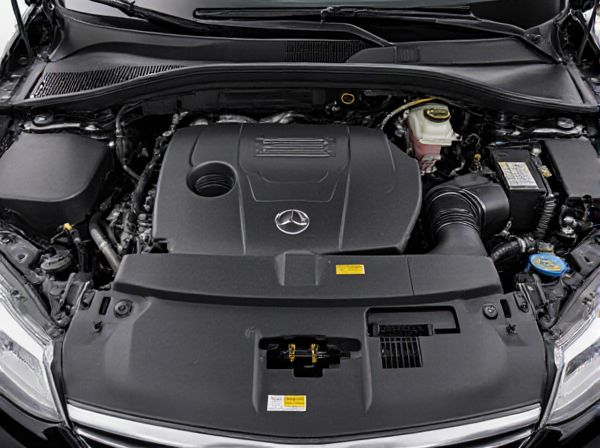
Photo illustration: Closed Loop Cooling vs Open Loop Cooling
Closed loop cooling systems circulate coolant within a sealed environment, preventing contamination and improving efficiency by maintaining consistent temperatures. Open loop cooling draws water from an external source like a river or cooling tower, which can introduce impurities and require more maintenance. Choosing between these systems depends on your facility's water availability, environmental regulations, and heat load requirements.
Table of Comparison
| Feature | Closed Loop Cooling | Open Loop Cooling |
|---|---|---|
| Cooling Method | Circulates coolant in a sealed system | Uses external water source like a lake or river |
| Efficiency | High efficiency, consistent temperature control | Variable efficiency, depends on external water temperature |
| Maintenance | Low maintenance, less corrosion risk | Higher maintenance, more prone to fouling and corrosion |
| Environmental Impact | Minimal environmental risk, no water discharge | Potential environmental impact due to heat discharge |
| Use Case | Common in modern vehicles and engines | Used in marine engines and industrial applications |
Introduction to Cooling Systems
Closed loop cooling systems circulate coolant through a sealed circuit, preventing exposure to external contaminants and improving temperature control efficiency. Open loop cooling systems draw fluid directly from an external source, such as a river or cooling tower, offering simpler design but increased risk of corrosion and fouling. Understanding the fundamental differences allows engineers to select appropriate systems based on environmental conditions, maintenance capacity, and thermal management requirements.
What is Closed Loop Cooling?
Closed loop cooling is a system where coolant circulates within a sealed circuit, preventing external contaminants from entering and maintaining consistent temperature control. This method enhances reliability and efficiency by using a heat exchanger to transfer heat without exposing the coolant to the environment. Closed loop cooling is commonly used in precision machinery, data centers, and HVAC systems to ensure stable thermal management.
What is Open Loop Cooling?
Open loop cooling is a heat dissipation method where water from an external source, such as a river, lake, or municipal supply, circulates directly through the cooling system and is then discharged back into the environment. This system relies on a continuous supply of fresh water, making it efficient for applications with access to abundant water resources but susceptible to environmental factors like temperature and water quality. Open loop cooling is commonly used in large industrial processes and power plants due to its simplicity and lower initial cost compared to closed loop systems.
Key Differences Between Closed Loop and Open Loop Cooling
Closed loop cooling systems recirculate coolant within a sealed circuit, preventing external contamination and heat exchange with the environment, which enhances temperature control and system efficiency. Open loop cooling systems continuously draw ambient water from an external source, such as a river or cooling tower, allowing for greater cooling capacity but increasing vulnerability to contamination and maintenance needs. The primary differences lie in coolant circulation method, contamination risk, thermal efficiency, and system complexity.
Efficiency Comparison: Closed vs Open Loop
Closed loop cooling systems offer higher efficiency by recirculating coolant through a sealed system, minimizing contamination and thermal loss. Open loop cooling relies on direct intake of external water sources, which can introduce impurities and variable temperatures, reducing overall thermal performance. The controlled environment of closed loop systems ensures consistent heat transfer and lower operating costs compared to the fluctuating efficiency of open loop setups.
Water Usage and Environmental Impact
Closed loop cooling systems significantly reduce water usage by recirculating the same water, minimizing consumption and lowering environmental impact compared to open loop systems that continuously withdraw and discharge large volumes of water. Open loop cooling can harm aquatic ecosystems through thermal pollution and chemical discharge, while closed loop systems reduce these risks by isolating water from external sources and contaminants. Efficient water management in closed loop cooling supports sustainable industrial practices and helps meet regulatory requirements focused on water conservation and environmental protection.
Installation and Maintenance Considerations
Closed loop cooling systems require more complex installation due to sealed circuits and additional components like heat exchangers, but offer reduced contamination risks and longer fluid life, leading to lower maintenance frequency. Open loop cooling systems have simpler setup with direct cooling fluid intake, yet they demand frequent maintenance to prevent scaling, corrosion, and biofouling from exposure to external water sources. Choosing between the two impacts ongoing costs and system reliability based on site-specific water quality and maintenance capabilities.
Cost Analysis: Initial and Long-Term
Closed loop cooling systems have higher initial costs due to advanced components and sealed designs but offer lower long-term expenses through reduced water consumption and minimal maintenance. Open loop cooling systems feature lower upfront investment but incur higher operational costs driven by water treatment, energy consumption, and environmental compliance. Evaluating total cost of ownership reveals that closed loop systems are more cost-effective over time in water-scarce or regulatory-restrictive environments.
Ideal Applications for Each Cooling Method
Closed loop cooling systems are ideal for applications requiring precise temperature control and minimal contamination, such as semiconductor manufacturing and laboratory equipment, where closed circuits prevent exposure to external pollutants. Open loop cooling systems suit scenarios with ample water supply and less stringent contamination concerns, like HVAC cooling towers and large-scale industrial processes, due to their cost-efficiency and simplicity. Selecting the appropriate cooling method depends on factors such as environmental conditions, required temperature stability, and maintenance capabilities.
Choosing the Right Cooling System for Your Needs
Closed loop cooling systems offer enhanced efficiency and environmental control by recycling coolant within a sealed circuit, making them ideal for precision applications and regions with limited water resources. Open loop cooling systems, which rely on fresh water intake and discharge, provide a simpler and cost-effective solution suitable for facilities with ample water supply and less stringent temperature control requirements. Assessing factors such as water availability, maintenance capacity, environmental regulations, and process sensitivity helps determine the optimal cooling system tailored to operational needs and sustainability goals.
 caratoz.com
caratoz.com